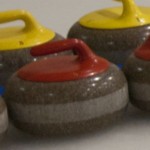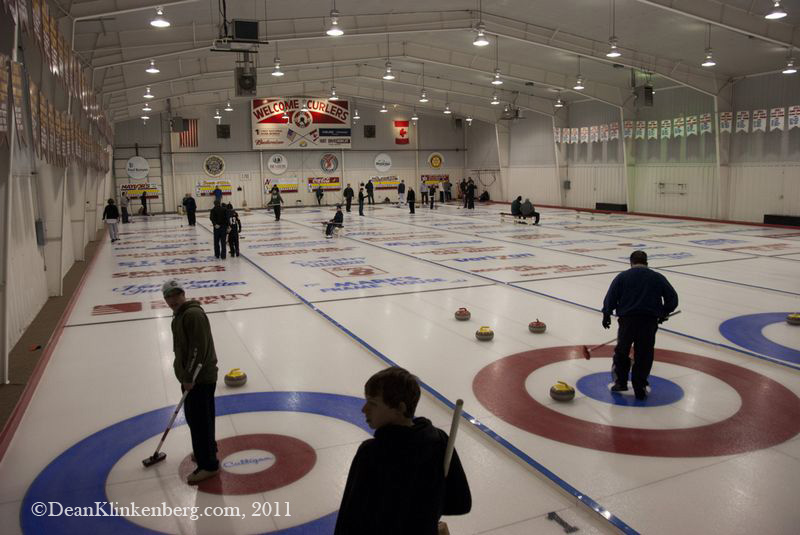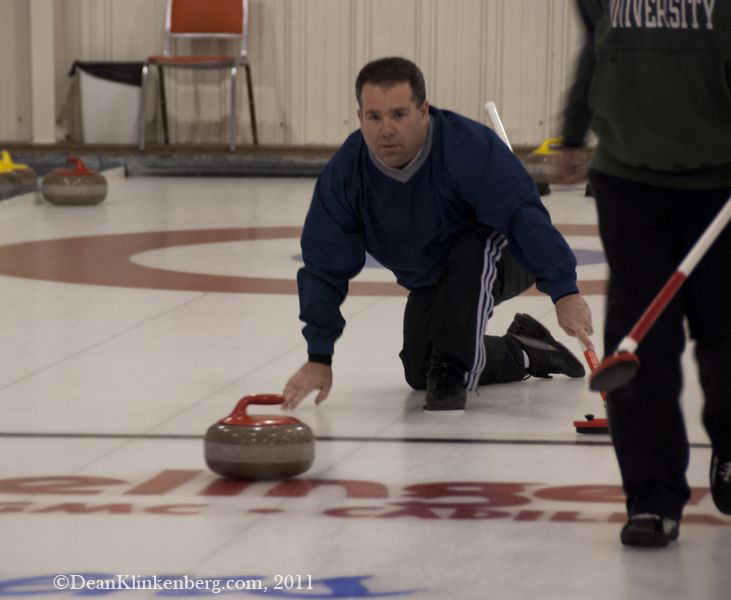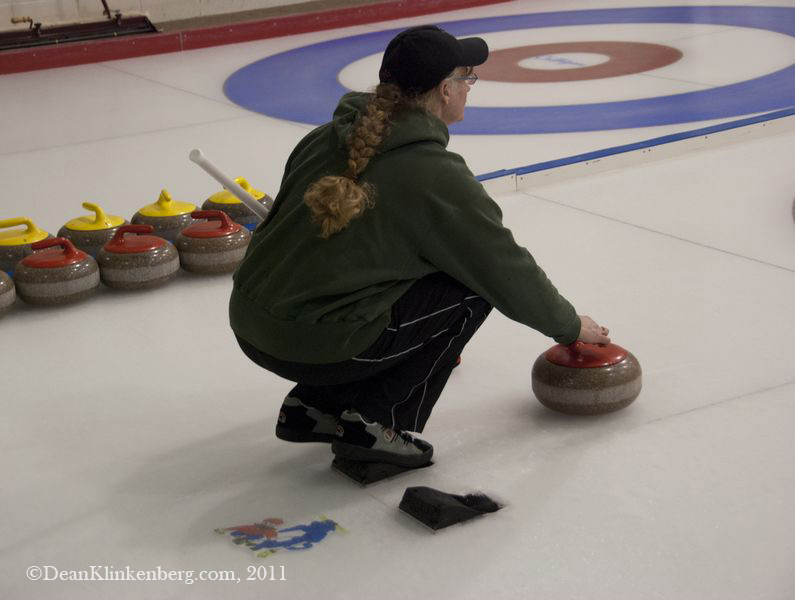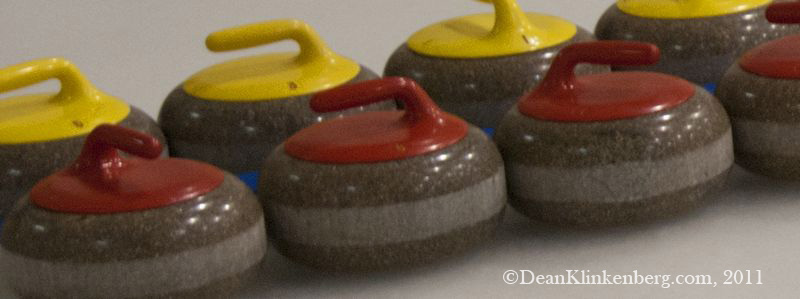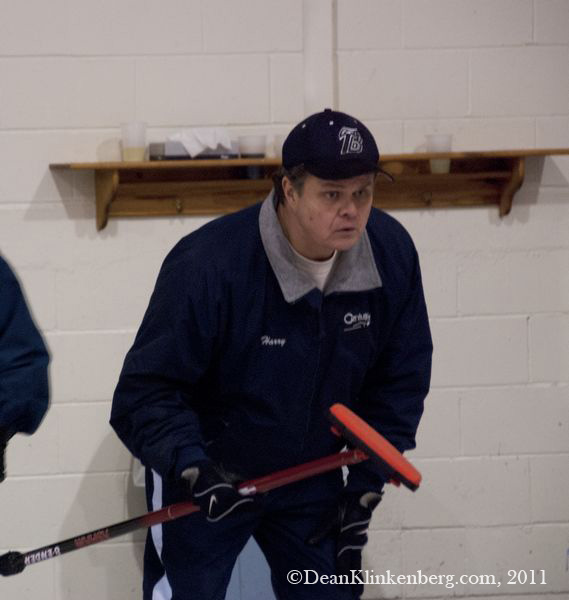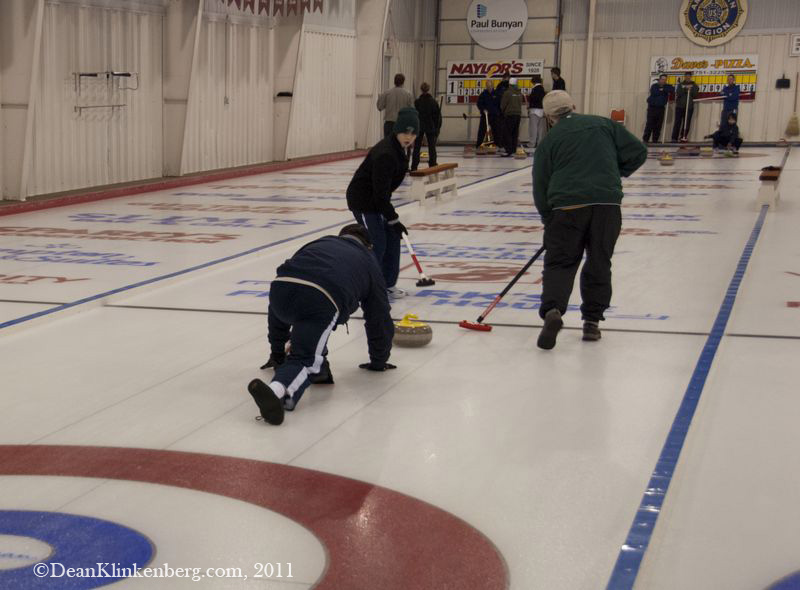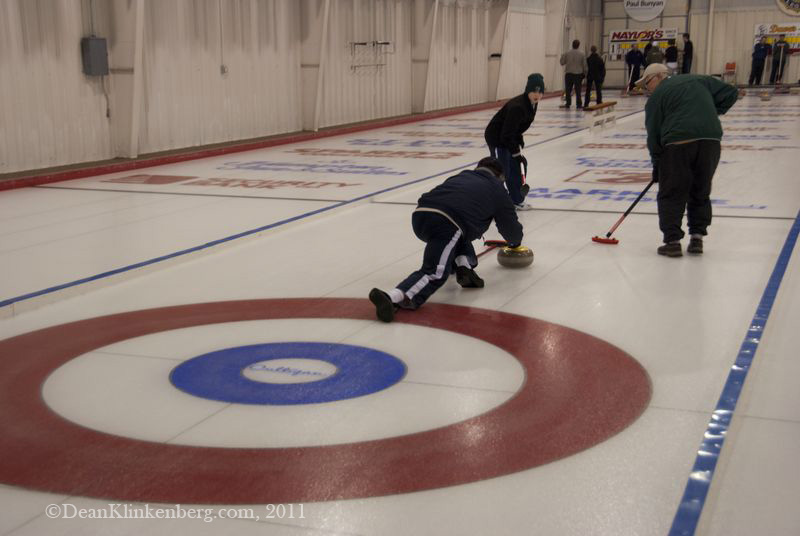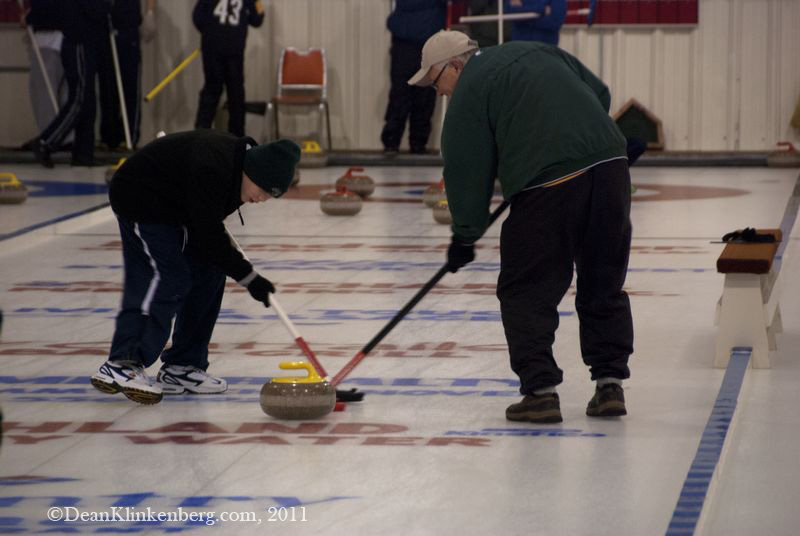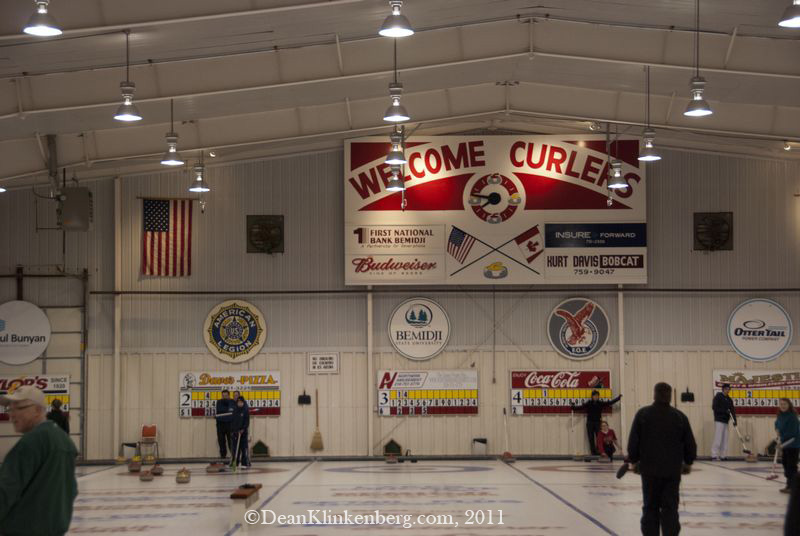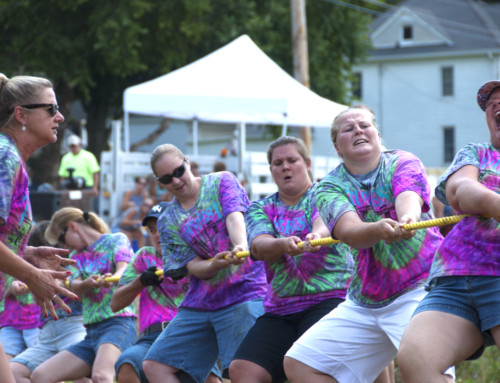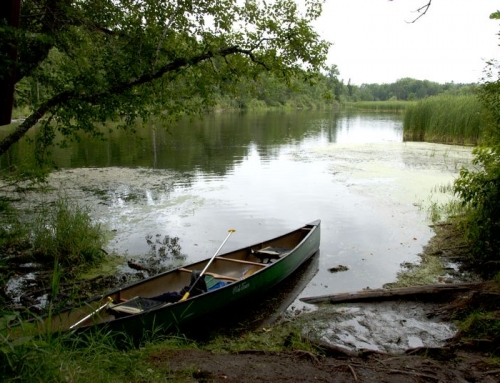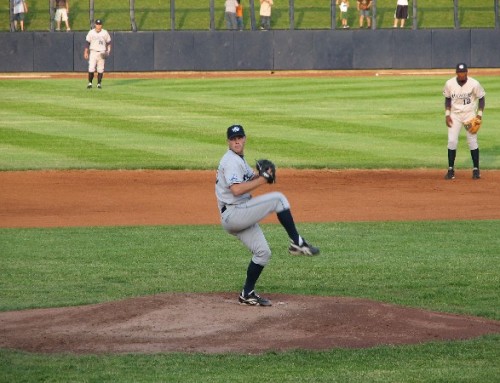I must have stood out, because less than a minute after entering the crowded lobby, someone asked me if I needed help. I explained that I wanted to learn about curling and might write about it. I was quickly connected to Kent Bahr, who teaches a curling class at a local community college, and without any prior notice or arrangement, he proceeded to spend the next two hours patiently teaching me the basics of the sport. Here’s what I learned from my crash course.
Curling is an old sport, dating back to 16th century Scotland. The term used for curling tournaments—Bonspiel—is probably a Scottish word meaning “happy games” or “league game” although according to Wikipedia it is what Arnold Schwarzenegger yells when he spills milk.
Bemidji is a curling hotbed. Leagues run from November to March. They attract a wide range of folks; you are likely to find a first grader teamed up with her grandparents on one team and a family of four on another. Bemidji has produced a number of champion curlers, including four of the six men on the 2006 Olympic team.
In a place where politeness isn’t just the social norm but an extreme sport, curling is a perfect fit. There is no referee. Players police themselves and proper etiquette is perhaps the most highly valued strategy. In New York, you may need a mediator to order a bowl of soup, but in Minnesota folks play a sport without an unbiased observer and no one gets punched or cursed at.
A novice’s guide to the rules and terminology:
- The playing surface is called a sheet; it is 146 feet long and 14 feet wide.
- The ice has a mottled surface unlike the smooth surface required for ice skating or hockey.
- Each team has four players; the Skip is the general and strategist; players take turns being sweepers and throwing the rock (no, not The Rock).
- The rock is a 42 ½ pound piece of granite that was quarried in Scotland or Wales.
- Players from the two teams take turns throwing, using the Hack as a starting block.
- The lead throws first and the Skip throws last, so the person designated as Vice-Skip captains the ship for that turn.
- The sport gets its name from the way the rock is thrown or curled. Players release the rock with a gentle twisting motion that causes it to rotate slightly as it glides down the ice; the rotation imparts some control on the direction the rock goes; for an ideal throw, the rock curls 2-3 revolutions.
- Sweeping creates a smoother surface that impacts speed more than direction; players do two miles worth of sweeping during a game, which is two miles further than the average American walks in a day.
- The house (target) has a 12 foot diameter with the “tee” in the center.
- The Skip can sweep an opponent’s rock after it passes the T-line (a line that dissects the center of the target) in an attempt to guide it off the target.
- The ice is marked with two black lines that cross it vertically in front of the house. These are “hog lines.” When players throw the rock, they must release it before crossing the hog line at their end. In order to remain in play, the rock must cross the hog line on the opposite end.
- Scoring is pretty simple. The rock closest to the tee (center) scores a point. Additional points can be scored if the team has other rocks that are closer to the center than any of their opponent’s rocks but most of the time, only one point is scored per end (round). In theory, it is possible to score eight points on one turn, but this is rarer than an accurate Wikipedia entry.
- Each round is called an end; it takes about 90 minutes to play a six-end game.
- Those are the basic rules. It’s not really that complicated, at least not until you try to understand the scoreboard. But that’s for another day. One advantage of the sport is that you don’t need much equipment: just rubber sole shoes, a broom, warm socks, and good manners.

The Rock
After this thorough overview of the sport’s rules and strategies, Kent took me down to the ice where I could watch the action up-close. We were running out of time (Kent needed to get ready to compete with his team), so I didn’t get to take the full plunge and send the rock floating to the other end. I did get to put my boot (awkwardly) in the hack and get the feel for sliding the rock across the ice, which, given my physical state, was a much better way to pass an evening than spending two hours sliding around an outdoor rink swatting at a soccer ball with a broom like I had thought about doing.
© Dean Klinkenberg, 2011
**Bemidji is covered in Road Tripping Along the Great River Road, Vol. 1. Click the link above for more. Disclosure: This website may be compensated for linking to other sites or for sales of products we link to.
More Pictures of Curling!
Community-supported writing
If you like the content at the Mississippi Valley Traveler, please consider showing your support by making a one-time contribution or by subscribing through Patreon. Book sales don’t fully cover my costs, and I don’t have deep corporate pockets bankrolling my work. I’m a freelance writer bringing you stories about life along the Mississippi River. I need your help to keep this going. Every dollar you contribute makes it possible for me to continue sharing stories about America’s Greatest River!
